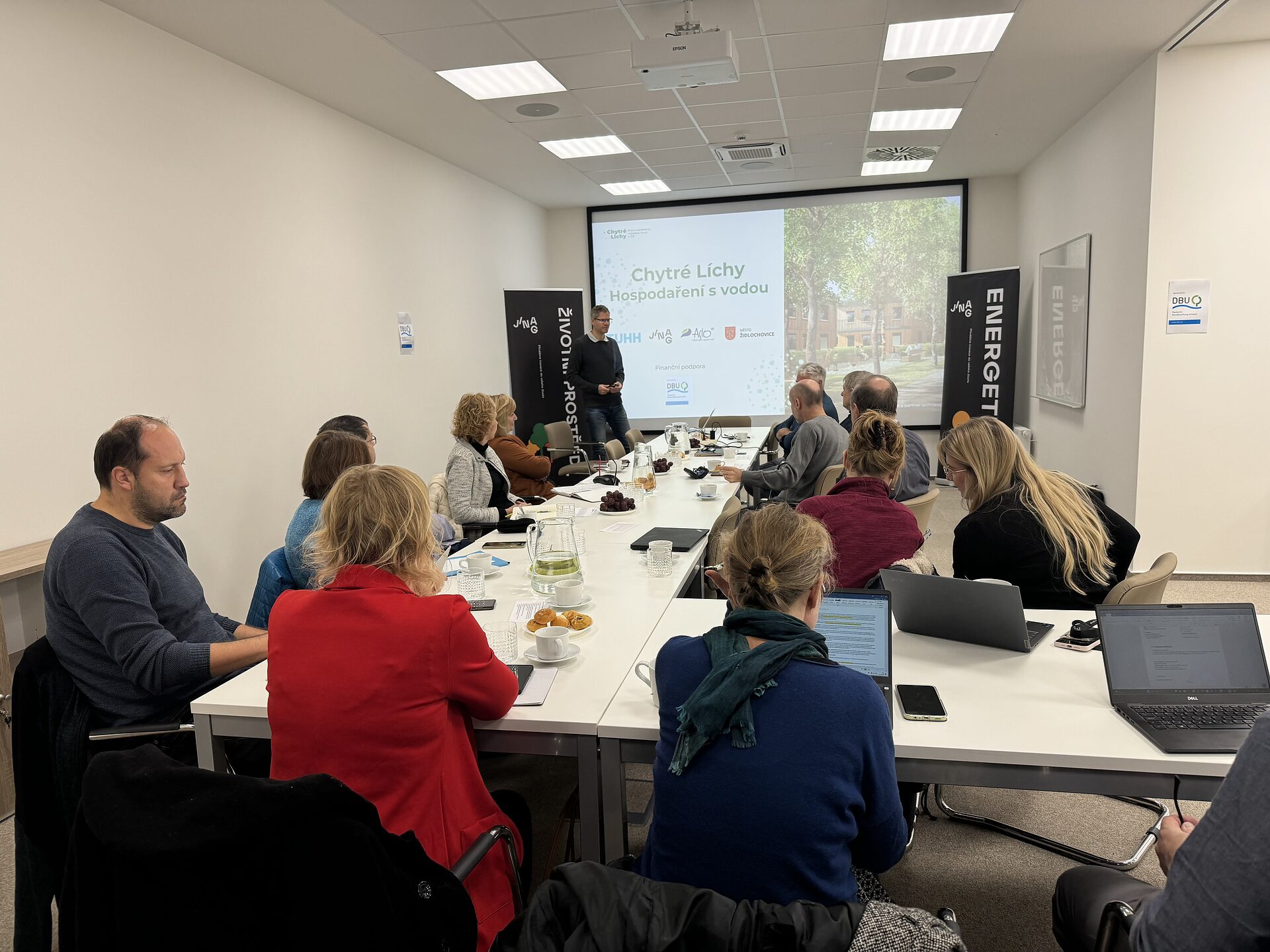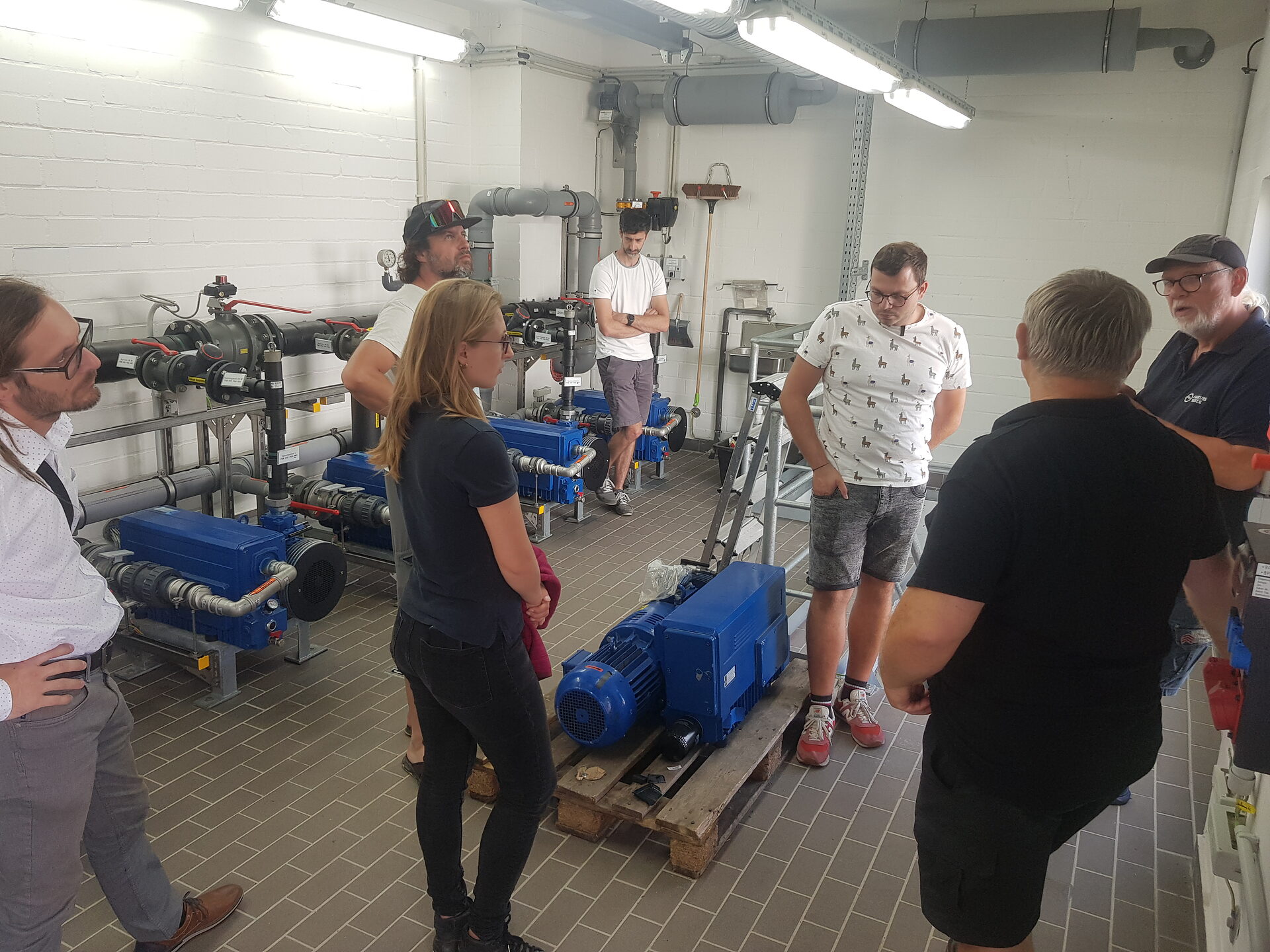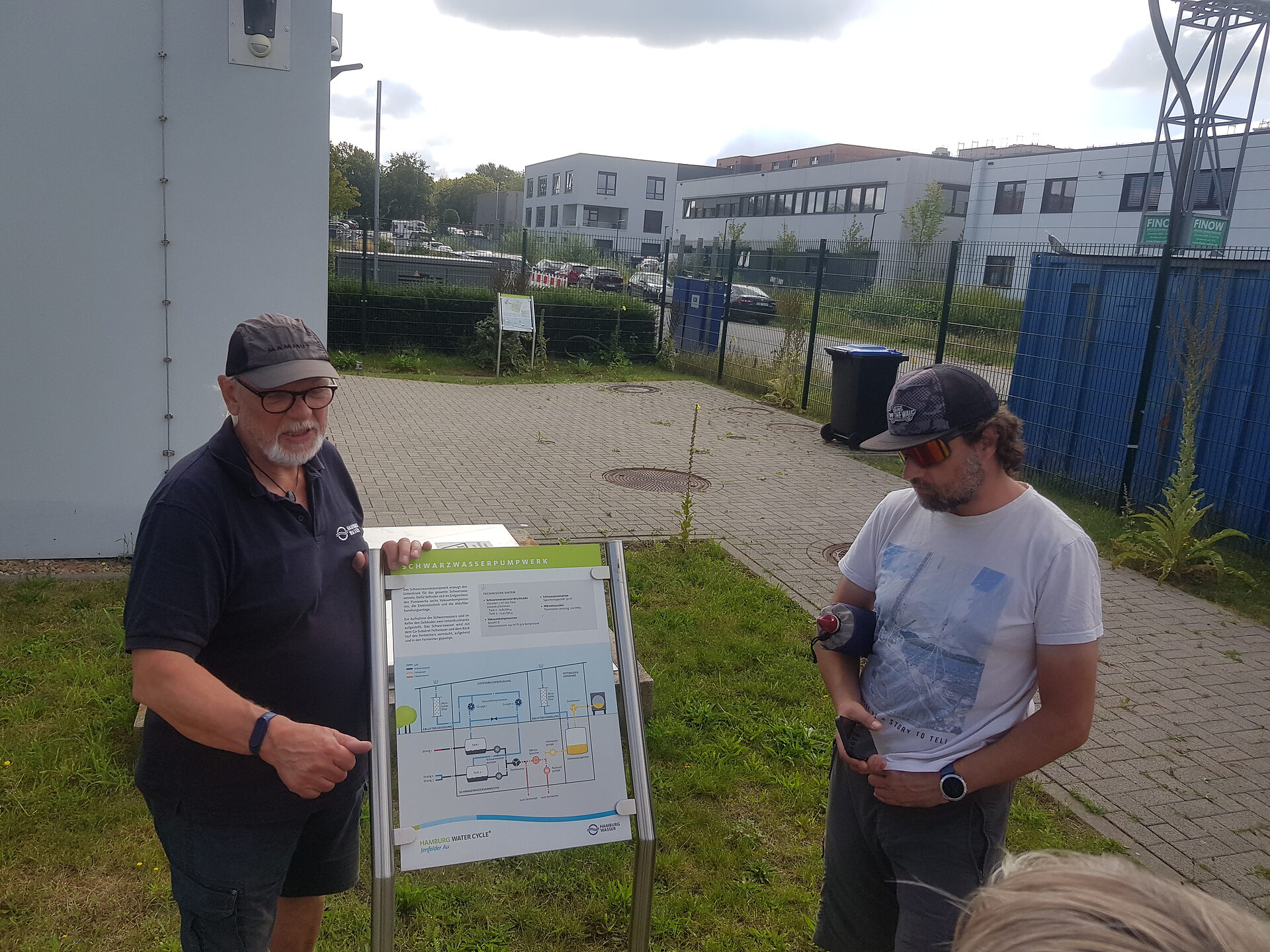Concept for innovative water management in the planned “Smart Lichy” residential district in the town of Zidlochovice, Czech Republic
Keywords: water/waters, waste water, resource conservation, environmental technology
Subject and objectives of the project
Using a newly developed district (“Smart Lichy”) with 80 to 120 residential units as an example, the project aims to show that a district can manage without a connection to the rainwater sewer system and that both the drinking water supply and the discharged wastewater can be reduced by 50% each. This is to be achieved by infiltrating rainwater and pre-treated, slightly polluted greywater in the settlement area and extracting the enriched groundwater for the irrigation of green spaces and for domestic use (“local water cycle”). In addition to planning and implementing the project as a practical contribution to sustainable neighborhood development, the aim is to convince the administration of the South Moravia region and the Czech Ministry of the Environment to enable similar solutions at other locations. The project’s target groups include companies and service providers from the town of Zidlochovice, representatives and investors from other municipalities as well as professional associations and experts from the fields of planning and architecture. The project also aims to raise awareness among the local population for the responsible use of water.
Work steps
After the start of the project and the conclusion of the contract between the partners (TU Hamburg, JINAG, ASIO, City of Židlochovice), the schedule was specified. The work was divided into four main activities.
In the first activity, technical solutions were developed. To this end, hydrogeologists drew up a water balance and analyzed inputs and outputs. Technical options were investigated in detail, including discussions with network operators and authorities. Various types of facilities such as meter shafts, pre-treatment plants and constructed wetlands were designed, evaluated and their costs estimated. Existing plants were inspected to gather operating experience. Research on risks and benefits as well as findings from a study trip to Germany, which included dry toilets and projects such as the HAMBURG WATER Cycle® and Ecological housing estate Flintenbreite (Lübeck), were incorporated into the development. Seven main variants (V1-V7) and sub-variants (V4L, V6L with pilot plants) were created, which were evaluated using a matrix with regard to criteria such as costs, ecology and feasibility.
The second activity was dedicated to the design of operating models. The variants were subjected to an economic analysis that included investment and operating costs. Individual solutions such as unit prices, infiltration systems and the dimensioning of constructed wetlands were calculated. In addition, the legal framework conditions for water reuse in the EU and Germany were researched and compared in order to formulate an adaptation proposal for the Czech Republic. Six European pilot projects were analyzed in terms of technology, acceptance and water quality.
As part of the third activity, the planning documentation was drawn up. After consultation with the city and the architect, the preferred variant V4L was selected. This combines a central drinking water supply, a central service water supply from a well, a greywater pilot project for around 30 residents with a constructed wetland and local infiltration as well as decentralized rainwater infiltration with central discharge of overflow water into a pond. Detailed planning documentation for water pipes, graywater treatment and rainwater management was then created. The methodology used included technical analyses, hydrogeological assessments, cost calculations, legal comparisons, stakeholder dialogs, expert workshops and the preparation of detailed planning documents.
The project activities and results were communicated to the public in more than 75 articles. Results were published in Czech/Slovak journals. Selected publications (in Czech):
- voda.tzb-info.cz/131589-netradicni-reseni-sanitace-mestske-ctvrti-chytre-lichy
- voda.tzb-info.cz/provoz-a-udrzba-voda-kanalizace/27713-vyber-vhodne-varianty-reseni-vodniho-hospodarstvi-v-konkretni-lokalite
The project was presented at specialist seminars, conferences (e.g. SANHYGA 2023, Kutná Hora water managers’ meeting) and workshops. Presentations were given by the project partner ASIO and the mayor of Židlochovice, among others. Information was made available on the websites of the project partners (ASIO, JINAG, town of Židlochovice). A short film and a presentation of examples of good practice were produced for the Czech Association of Towns and Municipalities and CzechInvest. Individual discussions were held with key players from the fields of hydrology, architecture, authorities and the regional government. A study trip to pilot projects in Germany (Berlin, Hamburg, Lübeck) was organized for partner organizations and stakeholders. A final expert workshop with representatives of relevant institutions served to validate the results. A final press release summarized the results and was widely distributed. These measures contributed significantly to the dissemination of the project results and to raising awareness of sustainable water management.
Innovation and exemplary nature of the project
The project is a pilot project to demonstrate good practice with the aim of inspiring other municipalities and investors planning larger construction projects. The use of groundwater with central distribution as service water has not yet been implemented on a similar scale in the Czech Republic. On-site separation of light grey water and on-site treatment in a near-natural way to minimize thecarbon footprint and preserve the original water conditions on site (local water cycle) has not yet been applied in the Czech Republic. The concept is also economically attractive, as it reduces the need to build expensive wastewater treatment plants.



Funding theme 5: Sustainable neighborhood development
Project implementation:
- Hamburg University of Technology (TUHH), Institute for Wastewater Management
and Water Protection - ASIO TECH, spol. s r.o. (Ltd.), Brno, Czech Republic
- City of Židlochovice, Czech Republic
- South Moravian Agency for Innovation in the Public Sector e. V. (JINAG), Brno, Czech Republic
Places of activity: Czech Republic
Funding period: August 2022 to December 2024
Project costs: Total volume: 194,923 euros, funding from DBU: 124,961 euros
DBU-AZ: 37985
Status: 13.05.2025
Cover picture: © Petr Dobrovolny
Other images: © JINAG